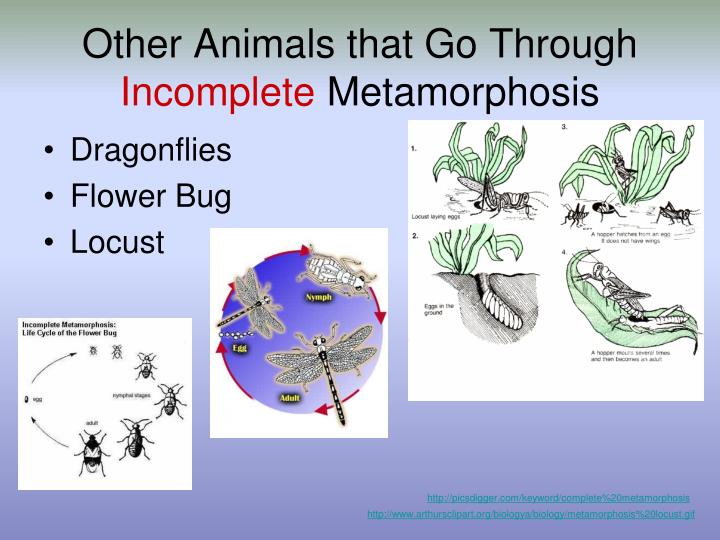

But, complete metamorphosis does not show any similar stages. Therefore, this is the key difference between incomplete and complete metamorphosis.įurthermore, in incomplete metamorphosis, middle stage nymphs resemble the adult from appearance. Incomplete metamorphosis consists of three stages namely eggs, nymphs and adult while complete metamorphosis consists of eggs, larvae, pupa and adult. Metamorphosis can be either incomplete metamorphosis or complete metamorphosis. What is the Difference Between Incomplete and Complete Metamorphosis? Also, both terms concern the life cycles of insects.Both types have common stages such as eggs and adult.Incomplete and Complete Metamorphosis are two types of metamorphosis seen in insects.What are the Similarities Between Incomplete and Complete Metamorphosis? It is their pupal stage, and the pupa develops into an adult during this stage. Larva makes a cocoon around it and stays inside without eating and moving. Caterpillar is the larva of butterfly, and they are completely different from each other, but the germplasm in both are the same.ĭuring the larval stage, they are voracious feeders and store much food inside them to be ready for the next stage of their lifecycle. Usually, the larva is completely different from the adult in their shape, size, food habits, etc. Eggs from a mated female reach the larval stage. The life cycle of complete metamorphosis has four different stages namely egg stage, larval stage, pupal stage, and adult stage. They have gills in the abdomen and look very different from their adults. Some species such as mayflies have aquatic nymphal stages, called naiads. Therefore, having wings in that stage benefits them.Ĭockroach, grasshoppers, dragonflies, and bugs are some of the insects that show incomplete metamorphosis and their life cycles have only three distinct stages. At the adult stage, they do not moult and start wandering in search of opposite sexes for mating. Usually, after four to eight moults, the nymph becomes an adult, which usually has wings. As the nymphs develop, they shed their exoskeleton to allow the body to grow large. Nymphs look mostly like adults, but smaller in size and their food habits are also the same as the adults. The hatchlings represent the nymphal stage of the life cycle. The egg case protects and covers the eggs when the proper conditions are present, the eggs hatch. An adult female lays eggs upon mating with a fertile male. There are three stages in incomplete metamorphosis known as egg stage, nymph stage, and adult stage. Summary What is Incomplete Metamorphosis? Side by Side Comparison – Incomplete vs Complete Metamorphosis in Tabular FormĦ.

Similarities Between Incomplete and Complete Metamorphosisĥ. It does not mean that one species can show both these two types, but it does suggest that certain species undergo incomplete metamorphosis while others undergo complete metamorphosis. However, these animals show two types of metamorphosis namely incomplete metamorphosis and complete metamorphosis. Most of the insects, amphibians, and many invertebrates undergo metamorphosis. Moreover, animals with metamorphosis undergo abrupt and conspicuous changes in body forms via cell growth and differentiation. In simple words, metamorphosis refers to the process seen in animals where several different structural types can be distinctively identified in the life cycle after the embryonic stage during the normal development. Metamorphosis means changing in form or transformation of body form.

The key difference between incomplete and complete metamorphosis is that the incomplete metamorphosis has forms that resemble the mature form during the normal development and the life cycle has three forms namely, eggs, nymphs, and adult, while the complete metamorphosis has only one adult stage and the life cycle has four forms namely, egg, larva, pupa, and adult.


 0 kommentar(er)
0 kommentar(er)
